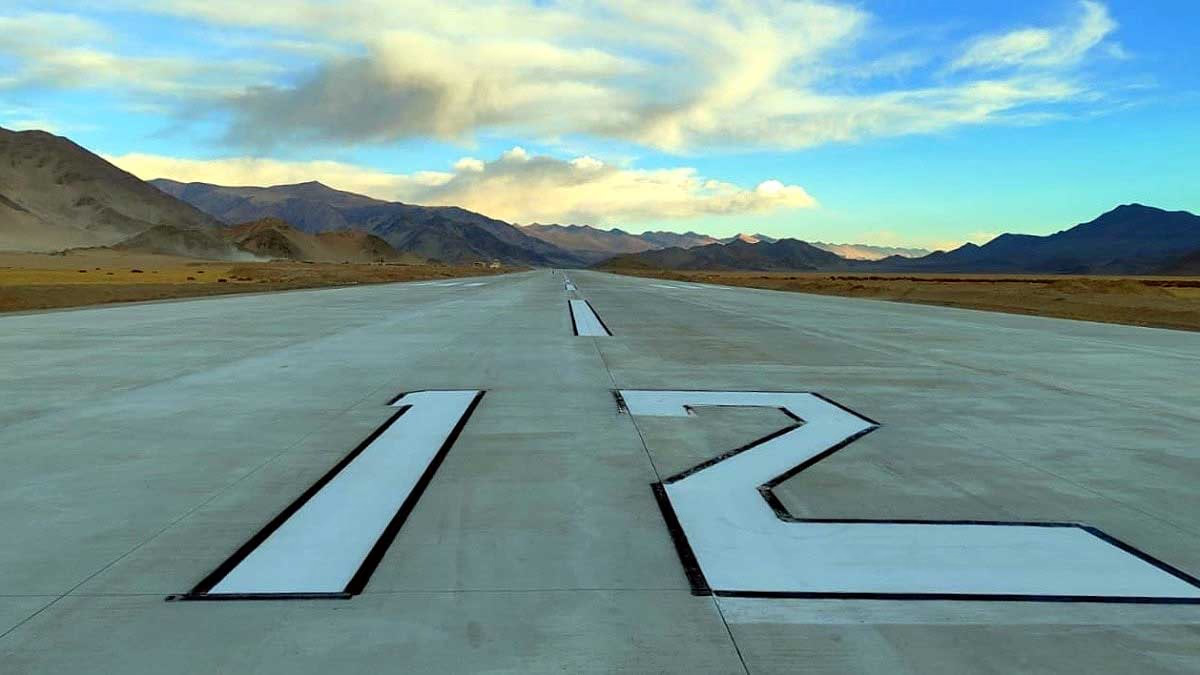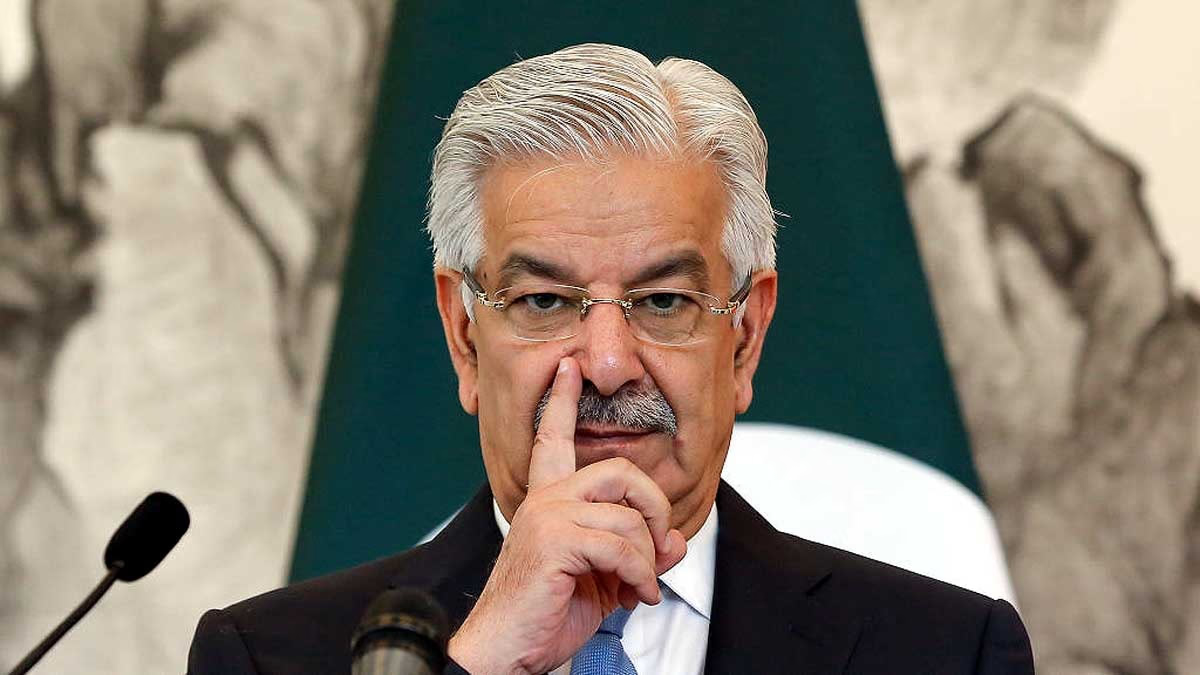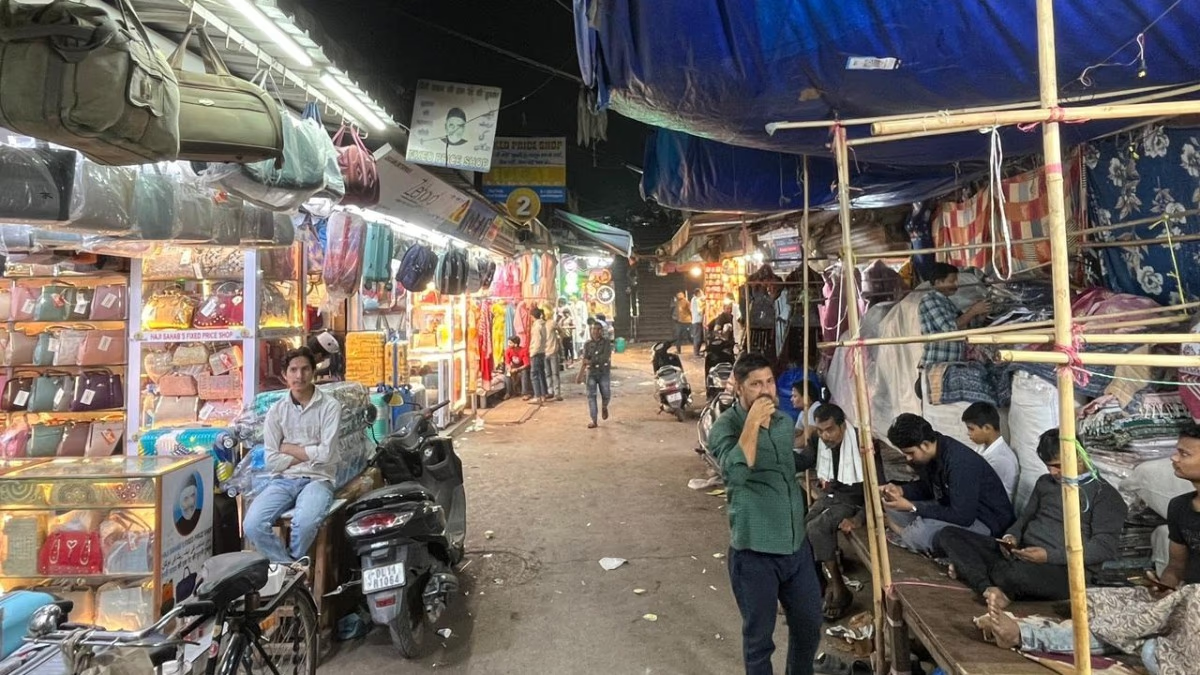The new operational Madh-Nyoma airfield in eastern Ladakh stands as India's highest, positioned at 13,700 feet above sea level. Situated closest to the Line of Actual Control (LAC), this Advanced Landing Ground (ALG) signifies a fortified Indian defense.
With boosted capabilities for swift military deployments, this airstrip enables rapid landing of military aircraft, particularly in mountainous regions where roadways pose challenges. Initiated in 2021, the project was completed at a cost of 214 crores.
Nyoma's airfield lies near the village of Mudh in Ladakh, featuring a new 3-kilometer runway designed for emergency flights. Although lesser oxygen presence compared to standard airstrips due to its elevation, engineers ensured its safety through innovative designs.

Source: aajtak
Indian Air Force (IAF) aircraft, like the C-17 Globemaster or smaller transport planes, can land here with ease. This facility drastically reduces the time to transport troops, weapons, and medical supplies to the LAC vicinity—from weeks on treacherous roads to mere hours by air.
Nyoma is particularly significant due to its proximity—just 20-30 kilometers from the LAC. Sending trucks or jeeps over perilous hills is dangerous, but the air route simplifies logistics. The local community also sees potential for civil flights—facilitating doctors or essential goods delivery.
Four years ago, in 2020, a clash occurred between India and China in the Galwan Valley, maintaining tension along the LAC. Meanwhile, India hastened its infrastructure development along the border, with Nyoma being part of this strategy. Recently, disengagement occurred between troops in Demchok and Depsang Plains, resuming patrolling but threats remain.
Nyoma grants the IAF direct access, allowing swift responses to Chinese maneuvers, expanding India's 'strategic depth'—an enhanced ability to encircle adversaries. Previously, soldiers traveled 200 kilometers from Leh Airport by road—impractical in freezing conditions. Nyoma cuts transit time to just 30 minutes. It fortifies not only military operations but also local medical and disaster relief initiatives.

Source: aajtak
India's government spearheaded record-speed initiatives across Ladakh and adjacent regions, constructing roads, tunnels, and bridges. Examples include:
Atal Tunnel: 10 km under Rohtang, linking Manali with Lahaul.
Darbook-Shyokh to Shinkun La Tunnel: Connecting Leh to Jammu.
New Roads: Over 100 kilometers near LAC for strategic connectivity.
These projects endured harsh weather—freezing -40 degrees, rain, snow—with 24/7 dedication from the BRO (Border Roads Organization).
The strategy is clear: empower the military while aiding local communities. Elevated ALGs like Nyoma are bridging the Himalayan border.
Nyoma's operational status marks a milestone in fortifying India's Himalayan frontier. Beyond bolstering military might, it promises benefits for remote villages. Prime Minister Narendra Modi emphasized that development at the border is the ultimate defense, and Nyoma exemplifies this commitment. Despite ongoing challenges of weather, maintenance, and regional tensions, India remains steadfast in safeguarding its territory.




